There are certain places best left off any tourism agenda, simply for safeties sake, such as a trip to the island of Summerisle, because even with Britt Ekland dancing nude it is still not worth the risk, then there is the issue of booking a room at The Shining’s Overlook Hotel, where the adage “All work and no play” can be deadly, and if you visit the countryside resort known as the “The Colony” in Joe Dante’s The Howling make sure you pack your silver bullets, but today we are looking at the coastal town of Potters Bluff from Gary Sherman’s Dead & Buried, a place with a dark secret that makes it quite the deadly tourist trap.
What exactly is Gary Sherman’s Dead & Buried? To be sure this 1981 classic is, by any definition, a true horror film as there are enough gruesome deaths to make any fan of the genre happy, but at its heart, it’s a dark and twisted mystery with one lone protagonist tilting at windmills like a modern-day Don Quixote. The movie opens with a photographer (Christopher Allport) practicing his craft on an idyllic beach outside the seaside town of Potters Bluff, where he is soon interrupted by a beautiful woman (Lisa Blount), a woman who first offers to pose for him but then suggests a more carnal reward, sadly for him, a mob of townspeople show up and beat him mercilessly and then set him afire all while the girl looks on smiling, and the last words he hears before being engulfed in flames are “Welcome to Potters Bluff.”
This is something I’m sure is left off their tourism brochure.
What follows is a bizarre series of events and murders with the town’s sole law officer, Sheriff Dan Gillis (James Farentino), futilely trying to make sense of all the craziness that has suddenly descended on his once peaceful town. The hard question to answer is “How much help can one expect when it appears that many of the townsfolk are brutal murderers?” Dan tries to get assistance from the town’s eccentric local mortician, William G. Dobbs (Jack Albertson), who doubles as the town’s coroner, but he seems more interested in his work as an artist than worrying about who is dying, pointing out what a crime it is that after all his work restoring a disfigured corpse it is then buried with no one to appreciate his genius. Gillis also turns to the local doctor (Joseph G. Medalis) after a hit-and-run strangely resulted in the “victim” assaulting him and then running off with its own severed arm, leaving behind tissue that the doctor assures him has been dead for months. Things take an even stranger turn when the innkeeper claims that the new gas station attendant is the same person who had been set on fire at the beach and then later murdered in his hospital room. Poor Dan is at a loss as dealing with these kinds of things was not part of his police academy training.
This is when you call in Peter Cushing or Donald Pleasance.
The case starts to hit a little too close to home when he learns that his wife Janet (Melody Anderson) was seen visiting the hotel room of the deceased photographer, but even more disturbing is the fact that he finds a book on witchcraft and voodoo hidden in her dresser drawer, next to an elaborate occult looking dagger. She explains this away as a fun “lesson plan” for her students, but not only is it an odd subject matter for children but the information within the book also explains how a zombie can be made, and that it requiresthe victim first be brutally and painfully murdered and its heart sequestered away so that the “master” can maintain control of the undead subject. Even a small-town sheriff knows that kind of information is not normally found in schoolroom books. With one man burned, beaten, and then stabbed in the eye with a needle, another person found brutally slashed and beaten by the town’s docks, a beautiful hitchhiker horribly mutilated, her face smashed like a rotten pumpkin, and then a missing family's car being pulled empty out of the bay, this all seems to add up to something too horrifying to contemplate. Could there be some truth to the idea of the dead being brought back to life?
Science or supernatural, you be the judge.
What makes Dead & Buried such a great film isn’t simply the wonderfully gruesome deaths on display, though they are impressive and show the promising career of special effects master Stan Winston, whose make-up effects and puppetry in this film are simply fantastic, what makes this horror movie stand apart from its contemporaries is the sense of dread and unease that director Gary Sherman and cinematographer Steven Poster were able to develop throughout the course of the film as the mystery slowly unfolded, and any connoisseur of the horror genre knows that without a connection to the characters on screen no true suspense can be built and with Dead & Buried such a feat is accomplished quickly and economically by using quick archetypes that are easy to set-up, but with enough meat to make their demise matter. At the center of this film is Jack Alberton’s weirdly eccentric mortician whose penchant for Big Band music is only exceeded by his need to preserve "beauty" and his performance here is the key element that holds the whole thing together.
Grandpa Joe from Willie Wonka this is not.
It should be noted that this is not your garden variety horror/thriller, if that wasn't already apparent, as it will leave you with more questions than answers as there is no scene in which a character explains the ins and outs of the plot, in fact, many people may find themselves scratching their collective heads as they realize that not only is everything not spelled out but it doesn’t quite make a whole lot of sense if examined too hard, but I find that to part of the charm of Dead & Buried, as we the viewer are left just as confused and flummoxed as poor Sheriff Gillis, if not quite as horrified. There are countless slasher films out there but this blend of cult horror, extreme gore and a truly bizarre mystery makes this entry one that will stand the test of time and one I heartily recommend.
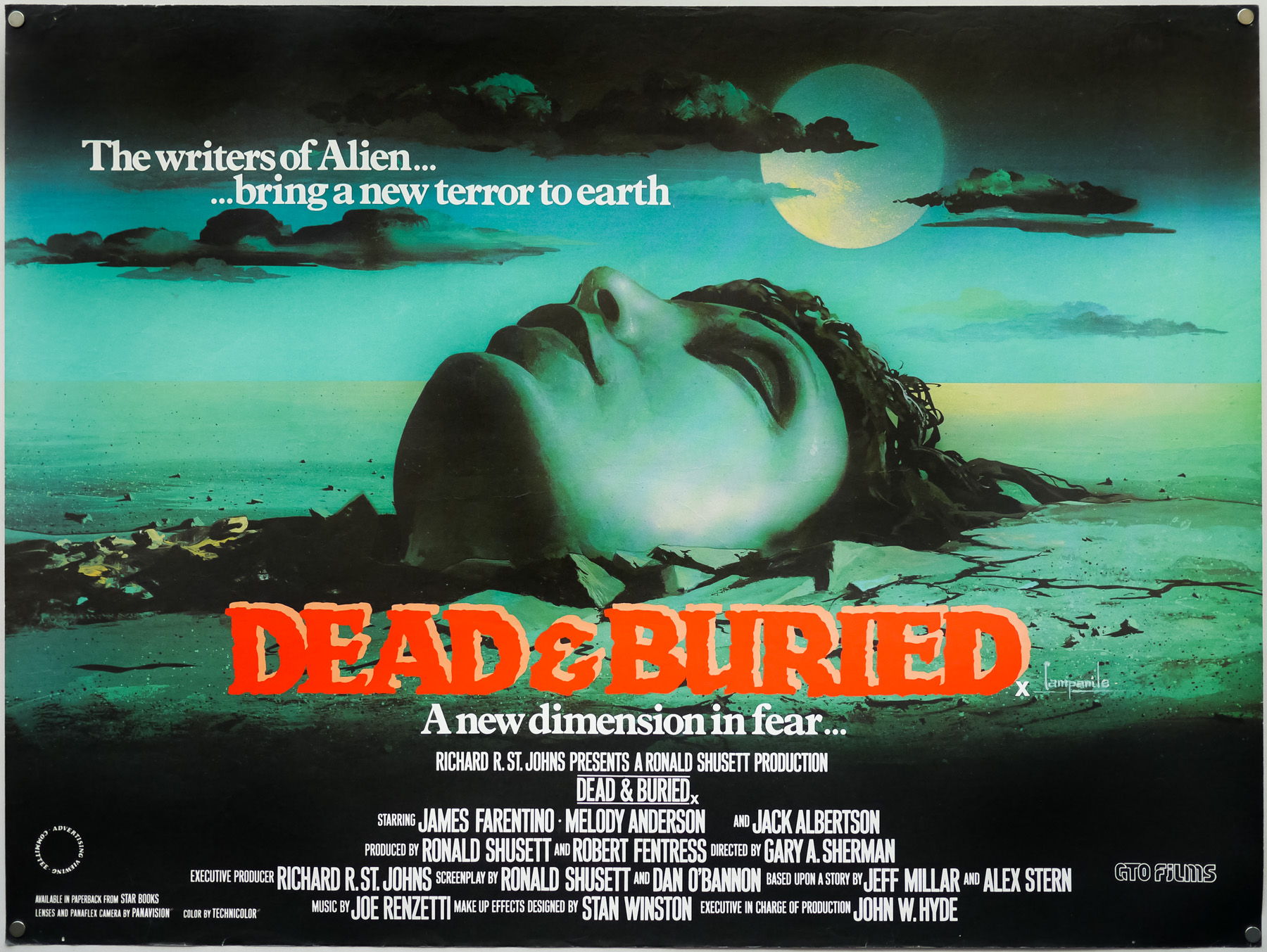
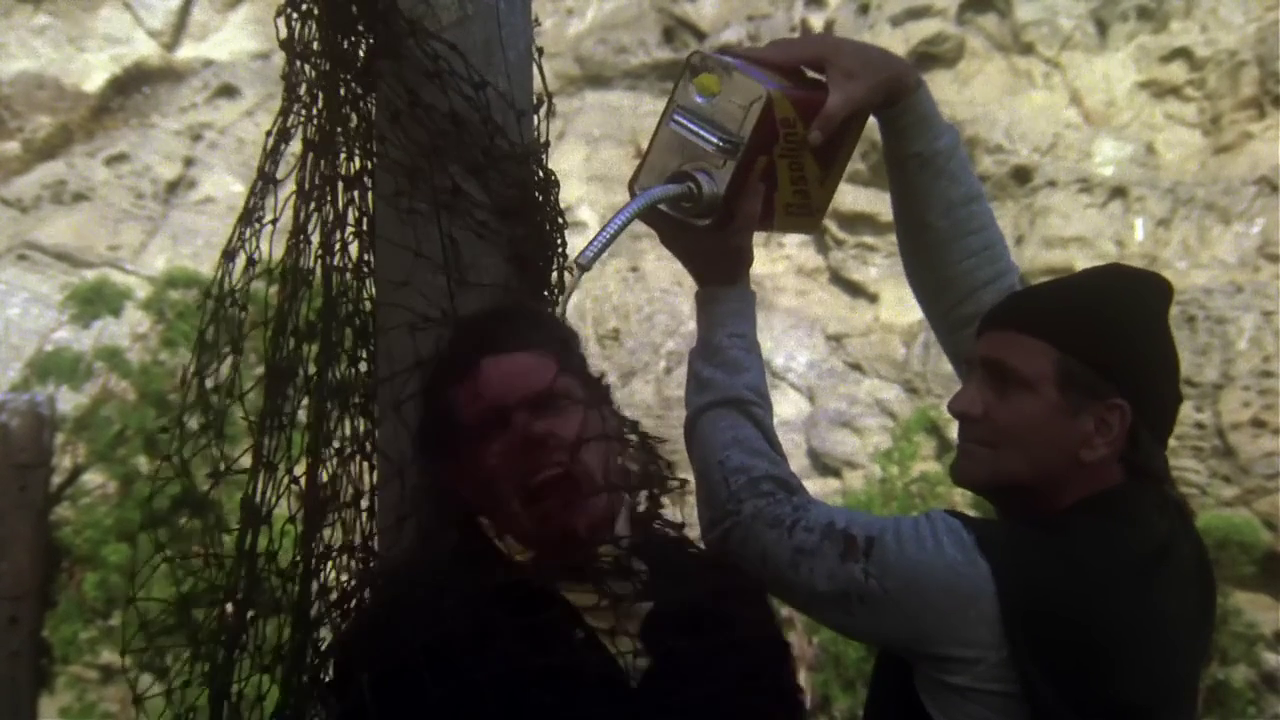
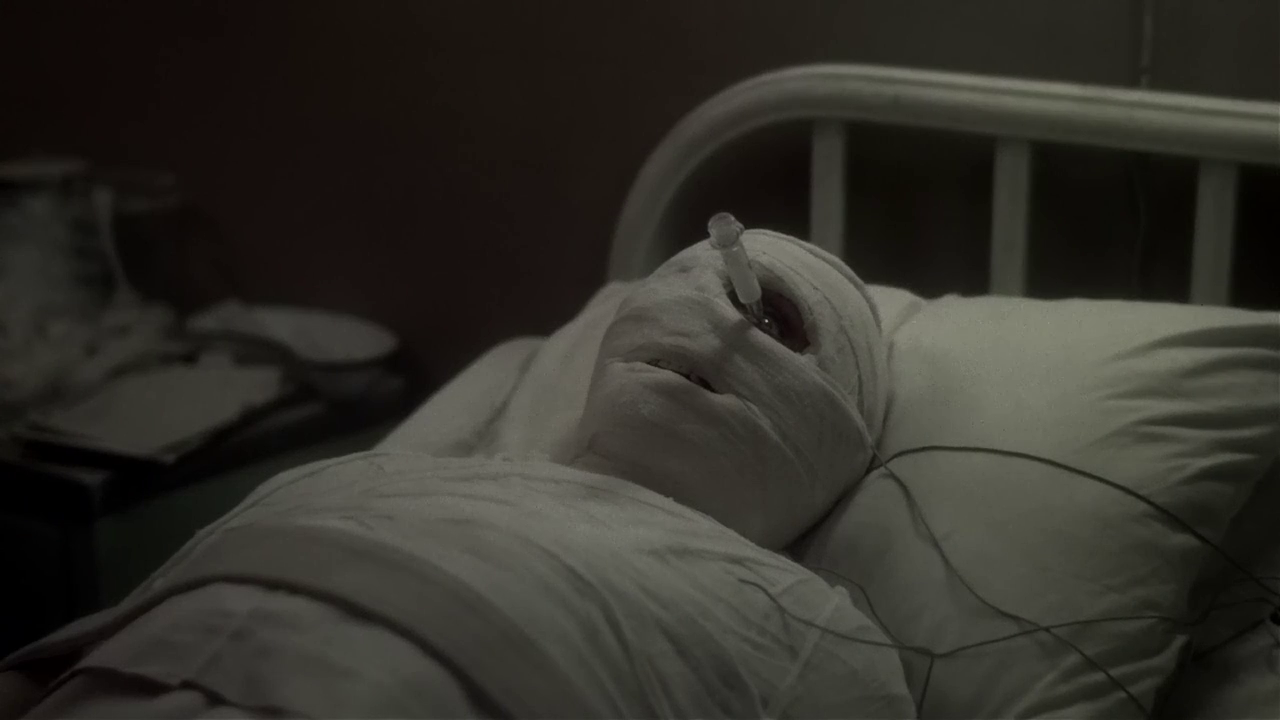
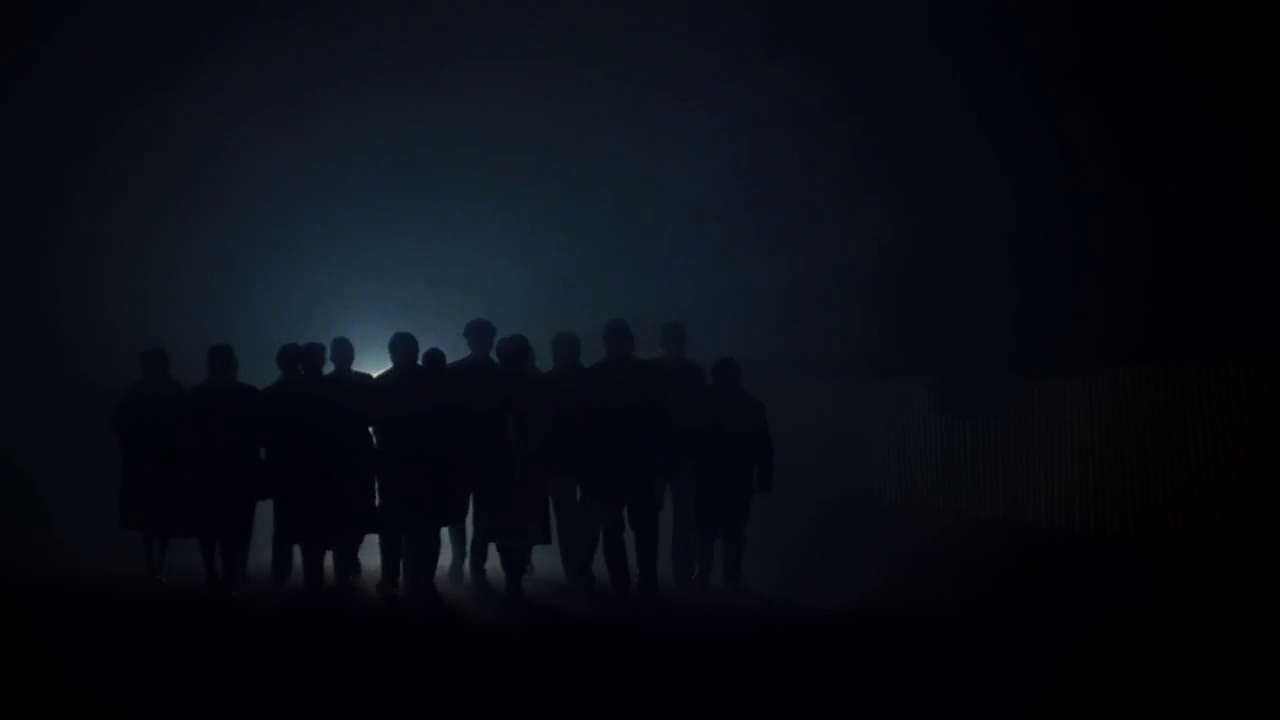
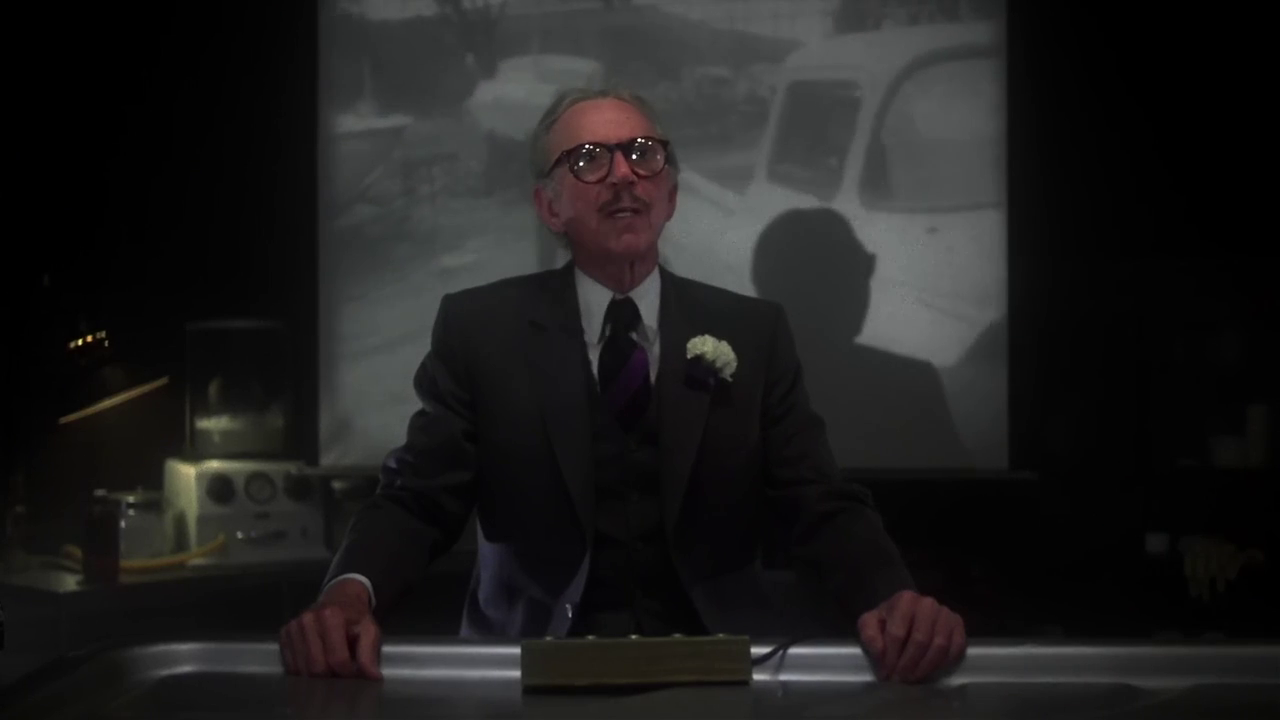

No comments:
Post a Comment